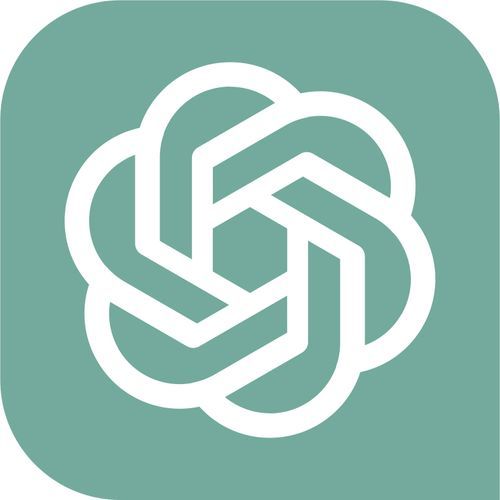Library of teambuilding games & icebreakers


One line at a time/consequences
This indoor team-building game involves together to write a story on a sheet of paper. The catch? You do it one line at a time, taking turns to contribute a sentence before folding over the sheet (just enough to cover the line) so the next person can’t see what you wrote.
One line at a time/consequences
This indoor team-building game involves together to write a story on a sheet of paper. The catch? You do it one line at a time, taking turns to contribute a sentence before folding over the sheet (just enough to cover the line) so the next person can’t see what you wrote.
You continue in this fashion until everyone has added a sentence! Whoever goes last then unfolds the paper and reads the story aloud. Not only is the game fun to play, but the random (and often amusing!) nature of the story demonstrates how valuable clear communication is in a team environment.
Gallery



Video


Letter to myself
This is another great activity for ending a large group event. Instruct everyone to write a letter to themselves that involves what you just did. For example, if part of the event was creating new goals, ask them to write how they’ll accomplish that. Then, depending on the size of the group, have people either pair off to share their letter or read their letter aloud. Opening up this way is a nice step toward getting everyone to bond and collaborate.
Letter to myself
How to play Letter to myself
This is another great activity for ending a large group event. Instruct everyone to write a letter to themselves that involves what you just did. For example, if part of the event was creating new goals, ask them to write how they’ll accomplish that. Then, depending on the size of the group, have people either pair off to share their letter or read their letter aloud. Opening up this way is a nice step toward getting everyone to bond and collaborate.
Gallery



Video


Community lunch
Organizing a community lunch at workplaces to show gratitude is an effective way to express appreciation for your employees.
Community lunch
Organizing a community lunch at workplaces to show gratitude is an effective way to express appreciation for your employees.
Leadership can take these steps to place a successful community lunch that shows their gratitude for their employees:
- Give workers the afternoon off and choose a time during the workweek that offers a break from completing tasks and an opportunity to destress.
- Ask employees to decide where to eat, considering surroundings, dietary restrictions, and accessibility. If teams are working remotely, view sending out gift cards for online ordering services where workers can buy lunch no matter where they are and set up lunch over Zoom.
- While having a community lunch should be relaxed and stress-free, letting team members spend time together, consider providing thank you notes and expressing gratitude to employees for their hard work.
- Make space for feedback after the community lunch. Ask employees if they enjoyed the event and whether or not they would like to do it again. Make communal time a priority and a time to show genuine appreciation, boost morale, and strengthen team relationships.
Hosting regular communal gatherings will create a positive workplace culture where employees or colleagues feel valued and motivated to be part of the team.
Gallery



Video


Recall quiz (at the end of an event)
How about a little icebreaker to wrap things up? Most icebreakers are at the beginning, but with longer events, we suggest interspersing them throughout - including the end. Have everyone go around the room and share their biggest takeaway from the day. Or, have a list of quiz-style questions that you ask everyone and see who can remember the most answers. Recall is an important part of memory, so this is a great time to reiterate the concepts that you really want people to take away.
Recall quiz (at the end of an event)
How to play Recall quiz (at the end of an event)
How about a little icebreaker to wrap things up? Most icebreakers are at the beginning, but with longer events, we suggest interspersing them throughout - including the end. Have everyone go around the room and share their biggest takeaway from the day. Or, have a list of quiz-style questions that you ask everyone and see who can remember the most answers. Recall is an important part of memory, so this is a great time to reiterate the concepts that you really want people to take away.
Gallery



Video


Duct tape three-legged race
The three-legged race is the ultimate teamwork game. Players are taped together by their ankles, using their outer legs and a single middle leg to move as seamlessly as possible to the finish line.
Duct tape three-legged race
How to play duct tape three-legged race
The three-legged race is the ultimate teamwork game. Players are taped together by their ankles, using their outer legs and a single middle leg to move as seamlessly as possible to the finish line.
If you have an outdoor area, this is a great place to host this game, as it is best played with enough space to make the race challenging. If you’re playing inside, find the widest open area between the starting and finish points. If you have teams that are larger than two people, you can split up into groups within the same team.
Gallery



Video


Killer wink
Bring a little mystery into your next event with this game. This one can add some comedy, but also become a sort of brain-teaser. It's fun for teams who don’t know each other that well (yet) since you don’t need to really know anything about each other to play. Obviously, as the name suggests, gauge your audience before playing - a game with pretend murder in it might not appeal to all audiences.
Killer wink
Bring a little mystery into your next event with this game. This one can add some comedy, but also become a sort of brain-teaser. It's fun for teams who don’t know each other that well (yet) since you don’t need to really know anything about each other to play. Obviously, as the name suggests, gauge your audience before playing - a game with pretend murder in it might not appeal to all audiences.
To play:
- Create a circle with room for people to move around, and have one person in the center of it.
- Secretly, select one person who is part of the circle (not in the center of it). You can just pick someone at random or maybe draw names in advance. Regardless, remember this should be a secret.
- Once the game is started, the selected person is the “killer”. They “kill” people by winking at them. When they make eye contact and wink at someone, that person is down and should fall over onto the ground. They can be as dramatic as they want, but obviously bigger reactions will get more laughs.
- The person in the middle is going to try and figure out who the “killer” is by observing the behavior of the group. They can have three guesses on who the culprit is. If they guess correctly, then the previous murderer is up in the center role. If they guess incorrectly, then they stay in the center and play another round.
Gallery



Video


Don’t drop the balloons
Don’t Drop the Balloons involves inflating masses of balloons in the office and making a rule that they can’t touch the ground! However, you can add a competitive element by splitting employees into 3+ teams and assigning balloons of a particular color to each one. If any of their balloons touches the floor, that team’s out!
Don’t drop the balloons
Want to raise the energy levels in the room? Lift people’s spirits? Encourage colleagues to work together to achieve a common goal?
Don’t Drop the Balloons involves inflating masses of balloons in the office and making a rule that they can’t touch the ground! However, you can add a competitive element by splitting employees into 3+ teams and assigning balloons of a particular color to each one. If any of their balloons touches the floor, that team’s out!
Gallery



Video


Review lottery
If customer service is part of your company culture, reviews are important. One fun way to incentivize more positive reviews and reward your team for great performance is by holding drawings of reviews. Every week, pick the new reviews submitted and print them - both bad and good - and then randomly draw one. If the review is positive, reward your team with a pizza lunch or other small prize. If the review is negative, share the feedback with your team and host a discussion on how to improve. You might even add some low-stakes repercussions such as having to take out the trash or replace the water filter for non-stellar reviews. Note: this sort of contest tends to work better than simply encouraging employees to ask for reviews. In those cases, the most outgoing and charismatic staff tend to get the most reviews, not necessarily the ones who serve customers best. A random drawing rewards the entire team while still highlighting individuals that might be mentioned. Getting more positive reviews can become an important goal for everyone in the department - more positive reviews equals more chances at fun perks.
Review lottery
How to play Review lottery
If customer service is part of your company culture, reviews are important. One fun way to incentivize more positive reviews and reward your team for great performance is by holding drawings of reviews. Every week, pick the new reviews submitted and print them - both bad and good - and then randomly draw one. If the review is positive, reward your team with a pizza lunch or other small prize. If the review is negative, share the feedback with your team and host a discussion on how to improve.
You might even add some low-stakes repercussions such as having to take out the trash or replace the water filter for non-stellar reviews. Note: this sort of contest tends to work better than simply encouraging employees to ask for reviews. In those cases, the most outgoing and charismatic staff tend to get the most reviews, not necessarily the ones who serve customers best. A random drawing rewards the entire team while still highlighting individuals that might be mentioned. Getting more positive reviews can become an important goal for everyone in the department - more positive reviews equals more chances at fun perks.
Gallery



Video


The floor is lava
Light-hearted and more than a little bit silly, The Floor is Lava is another excellent indoor game that’s sure to get people giggling! More importantly, they’ll be working together, listening, demonstrating leadership skills, and solving problems.
The floor is lava
How to play the floor is lava
Light-hearted and more than a little bit silly, The Floor is Lava is another excellent indoor game that’s sure to get people giggling! More importantly, they’ll be working together, listening, demonstrating leadership skills, and solving problems.
The idea’s simple: break your team into 2 groups and challenge them to take turns crossing the room together without touching the floor (…because it’s lava). While one group attempts the crossing, the other can try to sabotage their efforts – moving items they’d otherwise use as stepping stones and/or placing obstacles in their way.
Gallery



Video


Balloon Pop Relay
Balloon Pop Relay adds excitement and energy to the picnic. It promotes teamwork, coordination, and a competitive spirit. It also creates memorable and entertaining moments for participants and onlookers.
Balloon Pop Relay
How to play Balloon Pop Relay
Instructions: Divide participants into teams. Each team has a designated starting point and a finish line. One member from each team races to the finish line while carrying a balloon between their knees. They must pop the balloon before the next team member can start their turn.
Materials needed: Balloons
Balloon Pop Relay adds excitement and energy to the picnic. It promotes teamwork, coordination, and a competitive spirit. It also creates memorable and entertaining moments for participants and onlookers.
Gallery



Video


City Scavenger Hunt
Imagine your team deciphering riddles and tackling challenges to uncover hidden city gems - that's the essence of the City Scavenger Hunt. It's like a real-life puzzle where everyone's brainpower combines to crack codes and overcome obstacles. As you explore the city together, you're not only having a blast but also boosting your problem-solving and teamwork skills. It's a chance to unravel mysteries while strengthening bonds among your teammates.
City Scavenger Hunt
Imagine your team deciphering riddles and tackling challenges to uncover hidden city gems - that's the essence of the City Scavenger Hunt. It's like a real-life puzzle where everyone's brainpower combines to crack codes and overcome obstacles. As you explore the city together, you're not only having a blast but also boosting your problem-solving and teamwork skills. It's a chance to unravel mysteries while strengthening bonds among your teammates.
Instructions
- Form teams of players.
- Distribute riddles or clues that lead to hidden city locations.
- Players decipher riddles, solve challenges, and reach each location.
- At each location, complete the challenge to earn points.
- Document progress with photos or videos.
- The team with the most points at the end wins.
- Encourage teamwork, problem-solving, and exploration.
Bonus tip: Make sure to choose a city with a lot of history or landmarks- the more the city has, the more options you have to choose from!
Gallery



Video


Scattergories
Oh, Scattergories - that hilarious game that always leaves you scratching your head and laughing until your sides hurt. But did you know that this party favorite can be used in the office setting too?
Scattergories
Oh, Scattergories - that hilarious game that always leaves you scratching your head and laughing until your sides hurt. But did you know that this party favorite can be used in the office setting too?
How to play:
- Choose a category and a letter.
- Set a time limit for players to come up with answers.
- Each player writes down as many answers as possible starting with the chosen letter.
- Compare answers and eliminate any duplicates or invalid answers.
- Award points for unique and valid answers. Repeat with a new category and letter.
Not only is Scattergories great for building team chemistry and boosting morale, but it's also a sneaky way to get everyone thinking outside the box and flexing their problem-solving muscles. So the next time you're stuck in a meeting that feels like a snooze-fest, bring out the Scattergories and watch the magic happen!
Gallery



Video


What would you do?
Another classic icebreaker, this game involves coming up with some scenarios that require brain power to address.
What would you do?
How to play What would you do?
Another classic icebreaker, this game involves coming up with some scenarios that require brain power to address. Here are some prompts you can use with your group:
- What would you do if you were at the zoo and all the animals escaped?
- What would you do if you were the first person to find out about an upcoming zombie apocalypse?
- What would you do if you were in line for a really important item, and a person cut in front of you, getting the last item?
- What would you do if you were invited for dinner at the home of someone you really needed to impress, and the food was terrible?
- What would you do if an imposter that looks and acts just like you infiltrated your organization? How can you convince everyone that you’re the “real” you?
Gallery



Video


Most likely to
Here’s an ice-breaking, energizing, and entertaining game that’s great for small teams of people who know each other already. Expect it to open up funny conversations and help everyone learn more about their colleagues in the process.
Most likely to
Here’s an ice-breaking, energizing, and entertaining game that’s great for small teams of people who know each other already. Expect it to open up funny conversations and help everyone learn more about their colleagues in the process.
How to play Most likely to
Super simple, you play in a circle and take turns asking “who is most likely to”, followed by a specific trait or activity. For instance, Sally might ask the group:
- “Who’s most likely to bungee jump off a bridge?” Or
- “Who’s most likely to play a prank on the boss?” Or
- “Who’s most likely to be a night owl?”
Each team member then votes for whoever they think is most likely to do that activity or possess the trait. To spice things up, you could say that the participant with the most votes must perform a light-hearted punishment, such as making everyone a cup of coffee or handling the next tricky customer!
Gallery



Video


Bad idea parade
In this activity, teams are tasked with coming up with the worst possible solutions to a business problem. Whether it’s “replace all employees with robots” or “sell ice cream in the middle of winter,” the goal is to think outside the box in the worst possible way. This activity allows people to bond through humor while also getting them to think creatively about real solutions. Reverse engineering these bad ideas often leads to practical and effective ones.This is a fun twist on the traditional brainstorming session because it encourages people to loosen up and not be afraid of making mistakes. By focusing on what not to do, participants are more willing to take risks, which often leads to the discovery of innovative ideas.
Bad idea parade
How to play Bad idea parade
In this activity, teams are tasked with coming up with the worst possible solutions to a business problem. Whether it’s “replace all employees with robots” or “sell ice cream in the middle of winter,” the goal is to think outside the box in the worst possible way. This activity allows people to bond through humor while also getting them to think creatively about real solutions. Reverse engineering these bad ideas often leads to practical and effective ones.
This is a fun twist on the traditional brainstorming session because it encourages people to loosen up and not be afraid of making mistakes. By focusing on what not to do, participants are more willing to take risks, which often leads to the discovery of innovative ideas.
Gallery



Video


Feast & connect
Nothing brings people together like food. Feast & connect is all about gathering your team for a casual lunch, giving everyone a chance to chat, relax, and build relationships outside the usual work talk. No pressure, just good food and conversation.This laid-back team-building activity is perfect for boosting morale, sparking new connections, and strengthening bonds over shared meals. It’s a nice break from the hustle and a great way to show appreciation for your team. Plus, who doesn’t love a good lunch?
Feast & connect
Nothing brings people together like food. Feast & connect is all about gathering your team for a casual lunch, giving everyone a chance to chat, relax, and build relationships outside the usual work talk. No pressure, just good food and conversation.
This laid-back team-building activity is perfect for boosting morale, sparking new connections, and strengthening bonds over shared meals. It’s a nice break from the hustle and a great way to show appreciation for your team. Plus, who doesn’t love a good lunch?
How to play:
- Organize a team lunch with a relaxed, casual setting.
- Encourage conversation and bonding over food.
- Use the opportunity to strengthen team connections and morale.
Gallery



Video


Rock-paper-scissors challenge
Who didn’t play this game as a kid? Give this energizing grown-up version a try. People should play against each other in pairs until the first win. For added fun, have the people who become eliminated in each round stand in a cheering section for their favorite in the next round. Repeat the process until there are only two players, each with a large fan base. Since this game will get loud, it’s best to play outside in a large, open space. It’s a favorite because it requires no supplies and very little preparation, and gets everyone excited right away.
Rock-paper-scissors challenge
How to play Rock-paper-scissors challenge
Who didn’t play this game as a kid? Give this energizing grown-up version a try. People should play against each other in pairs until the first win. For added fun, have the people who become eliminated in each round stand in a cheering section for their favorite in the next round. Repeat the process until there are only two players, each with a large fan base. Since this game will get loud, it’s best to play outside in a large, open space. It’s a favorite because it requires no supplies and very little preparation, and gets everyone excited right away.
Gallery



Video


Desk Dash Dash
Rev up your office adventure with the Desk Dash Dash, a high-energy escapade through the corridors of cubicles and the realms of workstations. Teams must maneuver through a maze of office furniture, execute synchronized chair spins, and complete paperclip toss challenges. The twist? Team members can only use office supplies to communicate and navigate. The rush is on, and the winner takes the title of the ultimate Desk Dash Dash champion!
Desk Dash Dash
Rev up your office adventure with the Desk Dash Dash, a high-energy escapade through the corridors of cubicles and the realms of workstations. Teams must maneuver through a maze of office furniture, execute synchronized chair spins, and complete paperclip toss challenges. The twist? Team members can only use office supplies to communicate and navigate. The rush is on, and the winner takes the title of the ultimate Desk Dash Dash champion!
Instructions
- Form teams with a mix of skills.
- Create a course with obstacles through the office space.
- Teams navigate the course, completing challenges at each station.
- Use only office supplies for communication during the challenge.
- The first team to complete the course wins.
Gallery



Video


Emoji Quiz
Separate your group into equal teams. Then, display each title (written in emojis) on a screen and ask the teams to write down the name of the movie, song or book. Once you’ve asked all your questions, go back and reveal the answers. The team with the most correct answers wins!
Emoji Quiz
John: Hey, what’s your favourite superhero movie?
Jane: 🕷👨
John: Really? Batman’s my favourite too!
Jane: 🤦
If you’re like John, you won’t be any good at the Emoji Quiz. But if you’re like the other 99% of the population, capable of deciphering emojis without a second thought, then we have the perfect game for you!
Great for: Creative thinking, problem-solving
Duration: 5 minutes
Players: 4+
You’ll need: A list of movie, book or song titles written in emojis
How to play Emoji Quiz
Setup: Before playing Emoji Quiz, you need to create a list of movie, song or book titles written in emoji form. Here are a few examples:
- ⚫ 🦅 ⏬ = Black Hawk Down (film)
- 🍍 🚄 = Pineapple Express (film)
- 🐦 🐦 🐦 = Three Little Birds (song)
To play: Separate your group into equal teams. Then, display each title (written in emojis) on a screen and ask the teams to write down the name of the movie, song or book. Once you’ve asked all your questions, go back and reveal the answers. The team with the most correct answers wins!
Gallery



Video


Show your phone
A very simple and easy icebreaker involves asking everyone to share the latest “something” on their phone. The “something” could be their most recent photo, or the last app they had open. As long as it’s work appropriate, you can get creative about what you’ll ask people to show. A popular take on this game is to share the last 3 emojis you used, but you can get as creative as you feel comfortable. For a super fast and effective icebreaker, have each person stand up, introduce themselves, and share this tidbit of information based on your prompt.
Show your phone
How to play Show your phone
A very simple and easy icebreaker involves asking everyone to share the latest “something” on their phone. The “something” could be their most recent photo, or the last app they had open. As long as it’s work appropriate, you can get creative about what you’ll ask people to show. A popular take on this game is to share the last 3 emojis you used, but you can get as creative as you feel comfortable. For a super fast and effective icebreaker, have each person stand up, introduce themselves, and share this tidbit of information based on your prompt.
Gallery



Video


Your north
As well as being a good energizing activity for large groups, Your North is a great exercise for sparking conversation about the importance of team alignment and direction. Even better, it’s also simple and fun to play.
Your north
As well as being a good energizing activity for large groups, Your North is a great exercise for sparking conversation about the importance of team alignment and direction. Even better, it’s also simple and fun to play.
Here’s how it works:
- Ask the group to stand up, leaving plenty of space between them (everyone should be able to put their arms out to the side without touching anyone or anything)
- Show the team where north is (this could really be north if you have a compass on your phone, but feel free to make it up otherwise!)
- Tell everyone to cover their eyes with their left hand and spin around 10 times, keeping their eyes covered the whole time
- When they’re done, ask everyone to stretch out their arm and point toward where they believe north is now (their eyes should still be shut)
- The team can then open their eyes to see the many different directions in which people are pointing
Gallery



Video


Improv Hero
Divide the team into pairs or small groups and provide them with a random scenario or prompt. The teams must improvise a skit or scene based on the given negative scenario, using their creativity and spontaneity to deal with the issue
Improv Hero
How to play:
Divide the team into pairs or small groups and provide them with a random scenario or prompt. The teams must improvise a skit or scene based on the given negative scenario, using their creativity and spontaneity to deal with the issue
For example; the scenario could be “Child screaming in a supermarket”. Teams have 30 seconds to act out deal with their scenario
Materials needed: None
Benefits:
- Quick-thinking superheroes: Tap into your team's mental agility as they come up with witty lines and hilarious improvisations on the spot. It's like a comedy club where your team's creativity takes center stage.
- Teamwork with a twist: Collaborate with your scene partners and build upon each other's ideas, creating a seamless and entertaining performance. It's like a theatrical ensemble where the final act is a testament to your collective genius.
Gallery



Video


Role reversal game
This game is all about understanding conflicts from different perspectives. We're going to act out conflict scenarios and then swap roles to see how the other side feels. It's like stepping into someone else's shoes, but without the actual shoe-swapping part! It's a great way to build empathy and gain fresh insights on how to overcome teamwork challenges in the workplace. Get ready to embrace different perspectives!
Role reversal game
How to play Role reversal
This game is all about understanding conflicts from different perspectives. We're going to act out conflict scenarios and then swap roles to see how the other side feels. It's like stepping into someone else's shoes, but without the actual shoe-swapping part! It's a great way to build empathy and gain fresh insights on how to overcome teamwork challenges in the workplace. Get ready to embrace different perspectives!
Gallery



Video


Linkword
Here’s a letter game that has some great online worksheets to get teams started. This fast-paced brain teaser has teams thinking laterally. You might want to create teams for this one, as some examples can really get people scratching their heads.Your teams will look at three words and have to decide on one word that connects all three. Common words are the aim of the game. Let’s say for example you show them the words “POINT,” “SAFETY,” and “CUSHION”. All three of these words can be connected with the word “PIN,” forming “pinpoint,” “safety pin,” and “pin cushion.” Try this one out with your teams.
Linkword
How to play Linkword
Here’s a letter game that has some great online worksheets to get teams started. This fast-paced brain teaser has teams thinking laterally. You might want to create teams for this one, as some examples can really get people scratching their heads.
Your teams will look at three words and have to decide on one word that connects all three. Common words are the aim of the game. Let’s say for example you show them the words “POINT,” “SAFETY,” and “CUSHION”. All three of these words can be connected with the word “PIN,” forming “pinpoint,” “safety pin,” and “pin cushion.” Try this one out with your teams.
Gallery



Video

















